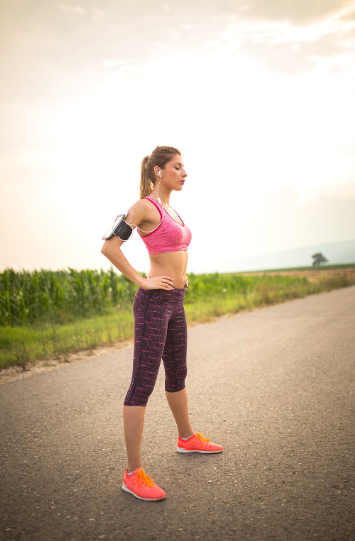Active Recovery: Strategies for Maintaining Mental Well-being
Introduction
Picture this: You’ve just crossed the finish line of a challenging race. Your muscles are fatigued, your mind is buzzing, and all you want is to collapse on the nearest couch. But what if I told you that the secret to sustained excellence lies not in just taking a rest but in how you actively recover?
Active recovery isn’t just a buzzword—it’s a powerful tool for enhancing both your physical and mental well-being. Whether you’re a competitive athlete looking to refine your performance or a high-achieving professional striving to balance stress, incorporating active recovery into your routine can be a game-changer. In this blog, we’ll explore how you can leverage active recovery techniques to rejuvenate your body, sharpen your mind, and maintain peak performance.
The Role of Active Recovery in Peak Performance
Active recovery is more than just a break—it's a dynamic approach to maintaining mental clarity and physical resilience. It involves engaging in light activities that keep your blood flowing, reduce muscle stiffness, and help your mind decompress.
For athletes, active recovery promotes muscle repair, reduces injury risk, and keeps you in the game. For professionals, it provides a buffer against stress, preventing burnout and enhancing productivity. Here’s why active recovery is essential:
Promotes Muscle Repair: Gentle movements help in the recovery of muscles by increasing blood circulation and aiding the removal of metabolic waste.
Enhances Mental Clarity: Light activities can help reset your mental state, allowing you to return to your tasks with a fresh perspective.
Reduces Stress: Engaging in recovery practices can lower stress hormones and promote relaxation, balancing your mind-body connection.
Prevents Overtraining: By integrating recovery into your routine, you maintain consistency in your training without the risk of overtraining or burnout.
Top Strategies for Effective Active Recovery
1. Low-Intensity Aerobic Activities
Engaging in low-intensity aerobic exercises, such as walking, cycling, or swimming, is excellent for active recovery. These activities help maintain cardiovascular health and muscle mobility without adding excessive stress to your body.
Example: Check out this guide to active recovery exercises which explains how walking, light cycling, and other low-intensity activities can boost your recovery.
2. Stretching and Mobility Exercises
Stretching and mobility exercises are essential for improving flexibility and reducing muscle tension. Incorporating dynamic stretches or yoga into your routine can enhance your range of motion and prepare your body for the next challenge.
Example: Discover various stretching and mobility techniques that can aid in your recovery and prevent injuries.
3. Foam Rolling and Self-Massage
Using foam rollers or massage tools to perform self-myofascial release can alleviate muscle tightness and improve blood flow. This technique helps in breaking down muscle adhesions and promoting faster recovery.
4. Mindfulness and Breathing Techniques
Incorporating mindfulness and deep breathing exercises into your routine can significantly enhance your mental well-being. These practices help reduce anxiety, improve focus, and foster a sense of calm.
Example: Explore this Mindfulness and breathing exercise resource for techniques that help manage stress and improve mental clarity.
5. Visualisation and Mental Rehearsal
Visualisation techniques are invaluable for both mental and physical recovery. Mentally rehearsing your goals and the steps to achieve them strengthens your mental toughness and prepares you for future challenges.
Example: Check out this visualisation and mental rehearsal guide which offers tips on how to use mental imagery to boost your performance and recovery.
6. Proper Hydration and Balanced Nutrition
Maintaining adequate hydration and eating a balanced diet are crucial for effective recovery. Proper nutrition supports muscle repair and keeps your energy levels stable.
Example: Discover essential hydration and nutrition tips for optimal recovery and performance.
Incorporating Active Recovery into Your Routine
Integrating active recovery into your daily routine doesn’t have to be complicated. Here are some tips to make it a regular part of your lifestyle:
Set Aside Recovery Time: Schedule specific times for active recovery activities to ensure they become a habitual part of your routine.
Listen to Your Needs: Be attuned to how your body and mind feel, adjusting your recovery practices to match your current state.
Diverse Techniques: Use a variety of recovery methods to keep things interesting and address different aspects of your well-being.
Holistic Approach: Combine physical activities with mental relaxation techniques to support a well-rounded recovery.
Conclusion
Active recovery is an essential component of maintaining optimal performance and mental well-being. By adopting these strategies, you can enhance your physical recovery, sharpen your mental focus, and stay resilient in all aspects of life.
If you’re seeking to enhance your athletic performance or need support in integrating effective active recovery strategies, our team at The Mental Game Clinic is here to help. We offer personalised consultations to address your unique needs and help you achieve your performance goals. Contact us today to learn more about our services!
Our experienced team of therapists specialises in sport and performance psychology, providing tailored strategies to optimise your active recovery and overall well-being. We understand how crucial active recovery is for managing stress, preventing burnout, and maintaining peak performance. Whether you’re an athlete, professional, or student, we provide a supportive and confidential space to explore and develop effective recovery routines.
References
Hydration Guidelines for Optimal Performance and Recovery – Glacial Community YMCA. (2023, July 27). https://www.glcymca.org/hydration-guidelines-for-optimal-performance-and-recovery/#:~:text=Pre%2DWorkout%3A%20To%20kickstart%20your,ounces%20of%20water%20per%20hour
Injinji. (2023, January 27). Warm up, stretching, and mobility techniques. Injinji®. https://www.injinji.com/blog/warm-up-stretching-and-mobility-techniques
Lanon, R. (2024, April 22). Active recovery for athletes: benefits and best practices. Blonyx Canada. https://blonyx.ca/blogs/blonyx-blog/active-recovery-for-athletes-benefits-and-best-practices
Marley, N. (2024, June 24). The role of mindfulness in enhancing athletic performance — The Mental Game Clinic. The Mental Game Clinic. https://thementalgame.me/blog/the-role-of-mindfulness-in-enhancing-athletic-performance
The athlete’s guide to recovery. (n.d.). Google Books. https://books.google.ca/books?hl=en&lr=&id=04LwEAAAQBAJ&oi=fnd&pg=PR7&dq=benefits+of+active+recovery+and+peak+performance&ots=YAOuhiXAjr&sig=q8fucCLakZcVfZSHUSyCVH6PAGE#v=onepage&q=benefits%20of%20active%20recovery%20and%20peak%20performance&f=false
The Mental Game Clinic. (n.d.). Psychotherapy for Mental Health & Sports Counselling | Toronto. https://thementalgame.me/
Yardley, K. (n.d.). THE MENTAL GAME CLINIC MINDFULNESS FOR ATHLETES. https://static1.squarespace.com/static/65775bcf5c1b7b7d034489dc/t/65f33d3da8b5a347f154d762/1710439745674/Calm%2Byour%2Bmind.pdf
Yuen, C. (2023, February 7). 8 foam rolling moves that’ll remove every bit of stress in your body. Healthline. https://www.healthline.com/health/fitness-exercise/foam-rolling-how-to#If-youre-a-foam-rolling-newbie,-dont-worry-heres-how-to-do-it
